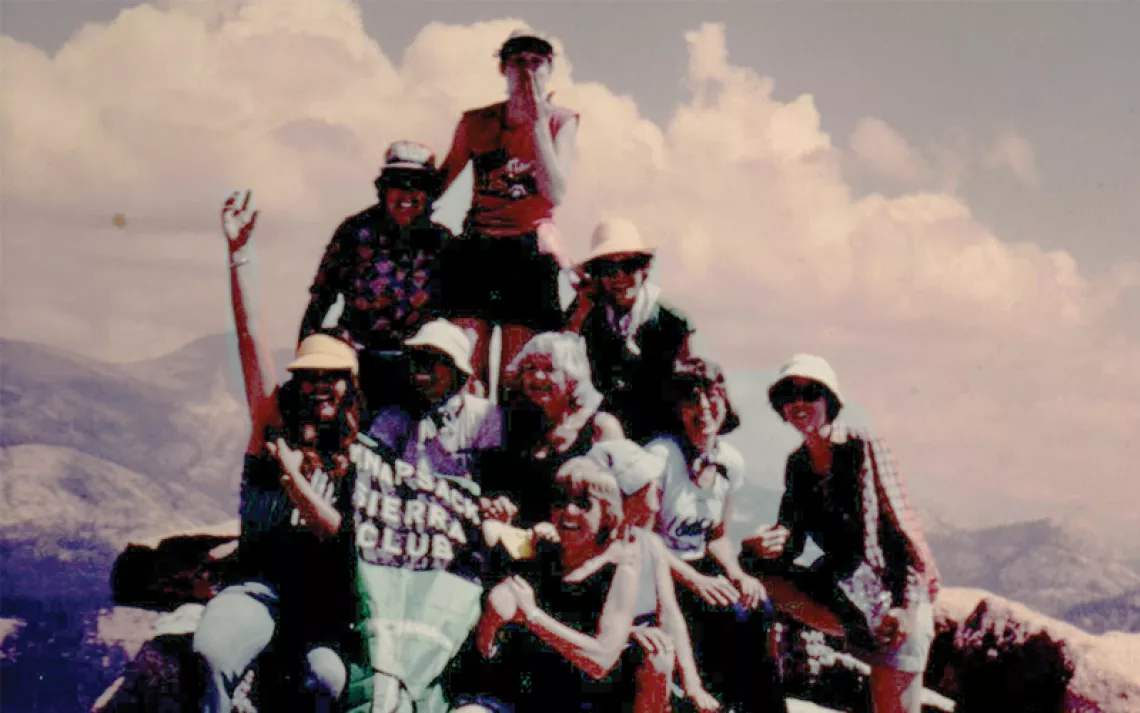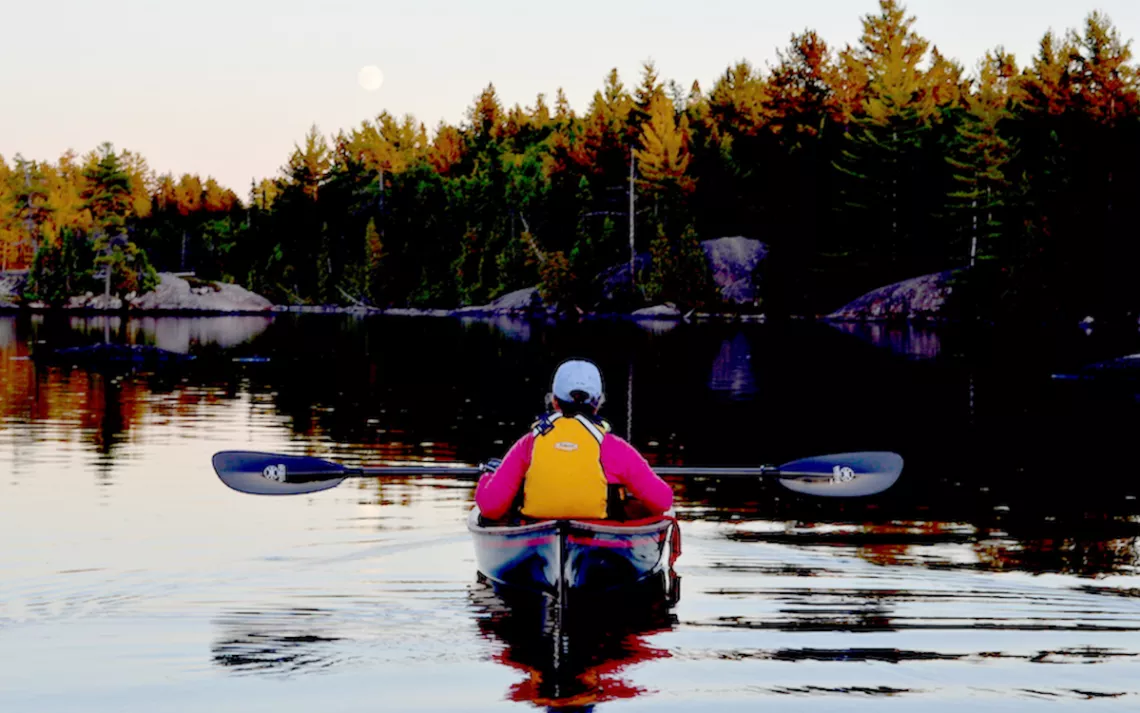Powered by Pup
Skijoring may be the ultimate winter adventure for you and your dog
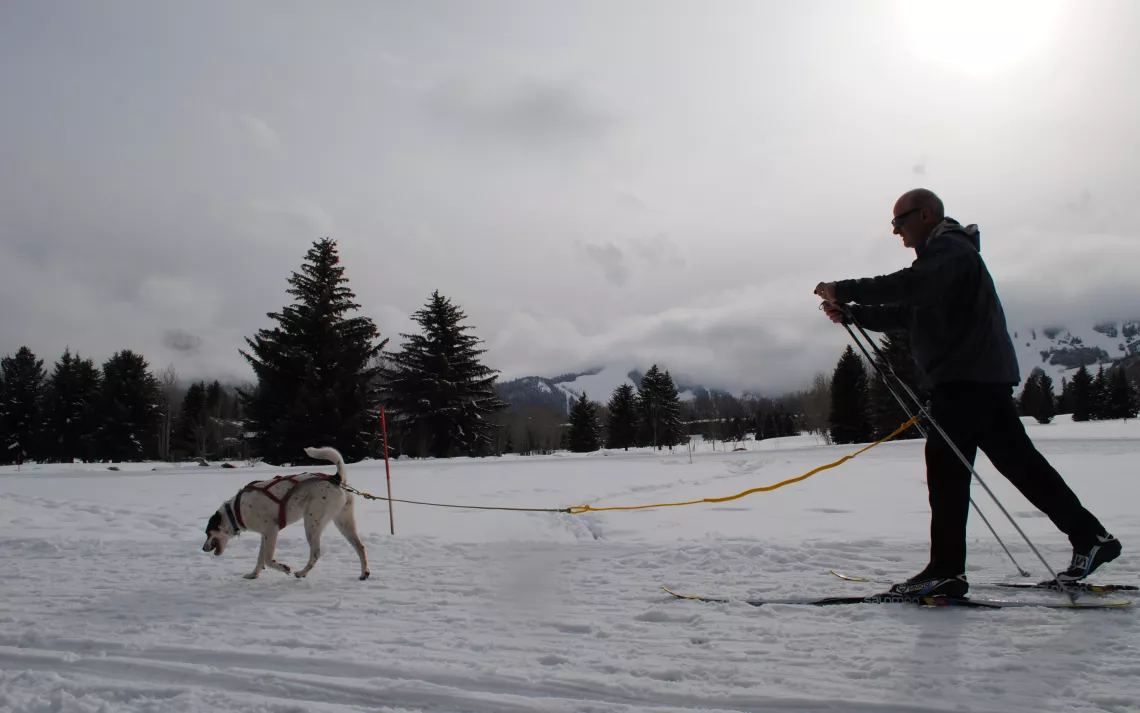
Photos courtesy of Cindy Hirschfeld
This winter, we finally found a way to tire out “Hyper” Piper, our energetic, four-year-old German short hair pointer mix. The secret? Skijoring.
At its most basic, skijoring involves a skier being pulled along by a four-legged friend. In many cases, especially in the western United States, that friend is a horse towing the skier on traditional Alpine gear at speeds of up to 50 miles per hour (sometimes with a few ski jumps thrown in for good measure).
Let’s agree that this sounds terrifying and focus on the more accessible version: donning cross-country skis and letting Fido pull you around a groomed, or just a packed-down, trail. This, too, can have its exhilarating-verging-on-panic-inducing moments, but, overall, it’s a fabulous way for both of you to exercise while strengthening your bond.
The first time I skijored was some 15 years ago with my golden retriever, Clover. We tried it at Devil’s Thumb Ranch, near Winter Park, Colorado, which offers several clinics each winter on its extensive Nordic trail system. My heart swelled with pride as the instructor pronounced Clover a “natural.” He also emphasized that the simple act of towing their person can give dogs the satisfaction of a job well done. Indeed, Clover trotted regally while “holding the line”—the skijoring term for keeping the rope connecting her and me relatively taut.
Fast forward to 2017: Due to factors including my single-minded devotion to downhill skiing, an increased workload, and raising a child, I hadn’t skijored since, despite that auspicious start. Recently, though, I got to talking to Seth Sachson, director of Colorado’s Aspen Animal Shelter and an avid skijorer who also races. Sachson is such a proponent of the sport that he sells all the necessary equipment—hip belts, harnesses, and towlines—at the shelter’s on-site store, and readily doles out tips and advice. When he mentioned that German short hair pointers’ speed and endurance make them great at skijoring, the proverbial lightbulb went on in my head. Add in Sachson’s description of the sport’s appeal—“When you’re at one with your dog in a great rhythm, it’s like you’re dancing together”—and his reassurance that as long as your dog will trot far enough in front of you to hold the line, you can indeed skijor together, and I became immediately motivated to do it again.
So on a midwinter Sunday, after poring through the book Skijor With Your Dog, I borrowed some of Sachson’s gear and brought Piper (and her 11-year-old sister, Tansy) to the trail system at the Aspen Cross Country Center. Along for the ride were my husband and our 10-year-old son. Both agreed to act as “rabbits,” encouraging scent-obsessed Piper—whose typical modus operandi mimics that of a ping-pong ball—to keep powering forward on the trail, in a relatively straight line.
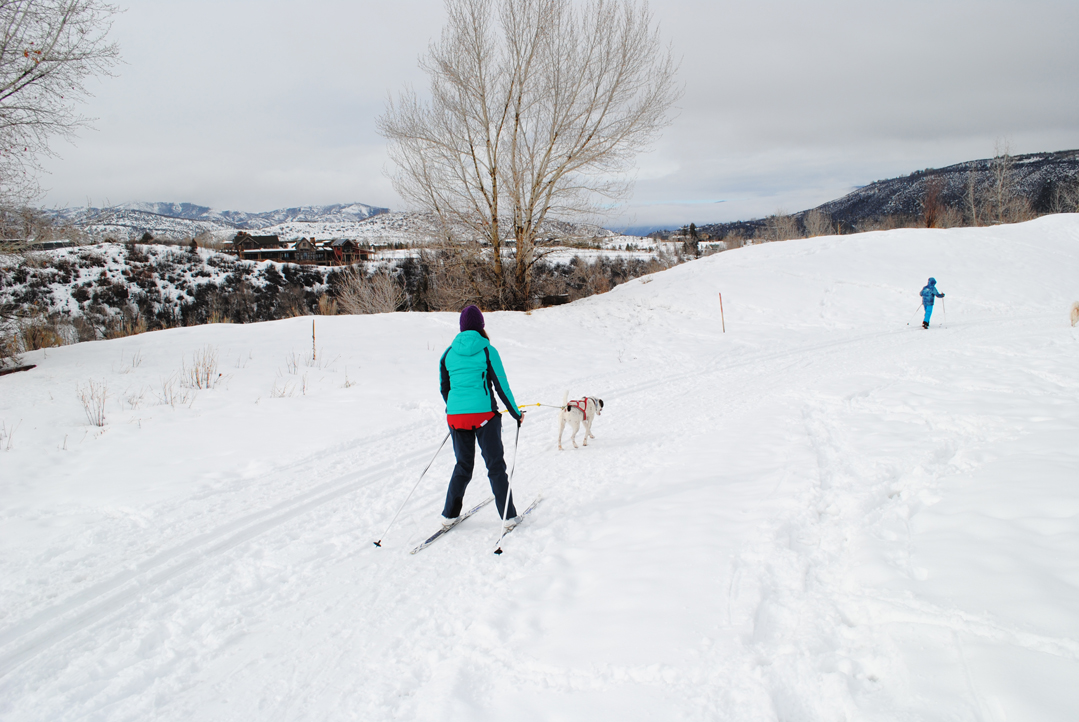 I donned the wide hip belt (which includes leg loops that keep it in place), then attached the towline to Piper’s harness, clicked into my skis, and waited. My husband and son skied slightly ahead and called Piper, who immediately responded. A key part of a skijoring setup is a bungee cord integrated into the towline; this ensures that your dog’s pull translates into a tug (and not an unpleasant jerk) when she sets off.
I donned the wide hip belt (which includes leg loops that keep it in place), then attached the towline to Piper’s harness, clicked into my skis, and waited. My husband and son skied slightly ahead and called Piper, who immediately responded. A key part of a skijoring setup is a bungee cord integrated into the towline; this ensures that your dog’s pull translates into a tug (and not an unpleasant jerk) when she sets off.
The next few minutes were—there’s no other way to put it—nerve-wracking. It was my first time back on cross-country skis this winter, and in between remembering how to balance on those toothpicks, and trying to get in sync behind Piper, I feared the experiment might be short-lived. Sachson had suggested I start off without ski poles (a common bit of skijoring advice) but I found that the poles were more help than hindrance in maintaining my balance and control.
Though the trail—dubbed the dog-friendly “Bernese Boulevard”—is relatively flat, a small hill looms at the start. Descending it, with Piper enthusiastically leading the charge, sent me into defensive, please-don’t-let-me-crash-and-burn mode. I thought of the dog in the movie Up (“Squirrel!”) and silently willed Piper to not spot some little critter. Luckily, the towline has a quick-release option for an emergency exit.
But once at the bottom, she and I regrouped, and the two of us finally started to find our rhythm. I even imagined the towline as a sort of umbilical cord, bonding us together in movement in a way we hadn’t experienced before.
“The main thing is to be comfortable with skiing, as well as have a good sense of humor and reasonable expectations,” says Louisa Morrissey, a Colorado-based dog trainer who regularly teaches skijoring clinics. “You’re out there to have fun with your dog. If you’re not having a good day, it’s better to quit and do something else. Dogs are so in tune with our emotions that they get confused by our frustration.”
Luckily, I don’t think I confused Piper too much. She happily trotted down the trail, her tail upright and waving; even Tansy, who was running on her own nearby, wasn’t a distraction. I handed over the hip belt and line to my husband for a try. He was on skate skis, the preferred mode for skijoring, and within seconds he and Piper had left me in the dust.
Our son was itching to try, and once we realized that Piper, too, seemed a natural at the sport, we linked up the two of them. Griffin, a better cross-country skier than either my husband or me (he started when he was five), was at ease right away. “It’s like water-skiing,” he enthused, “but on snow, with a dog.” In fact, I had to beg and cajole him to let me eventually have another go. I definitely see more skijoring in this kid’s future.
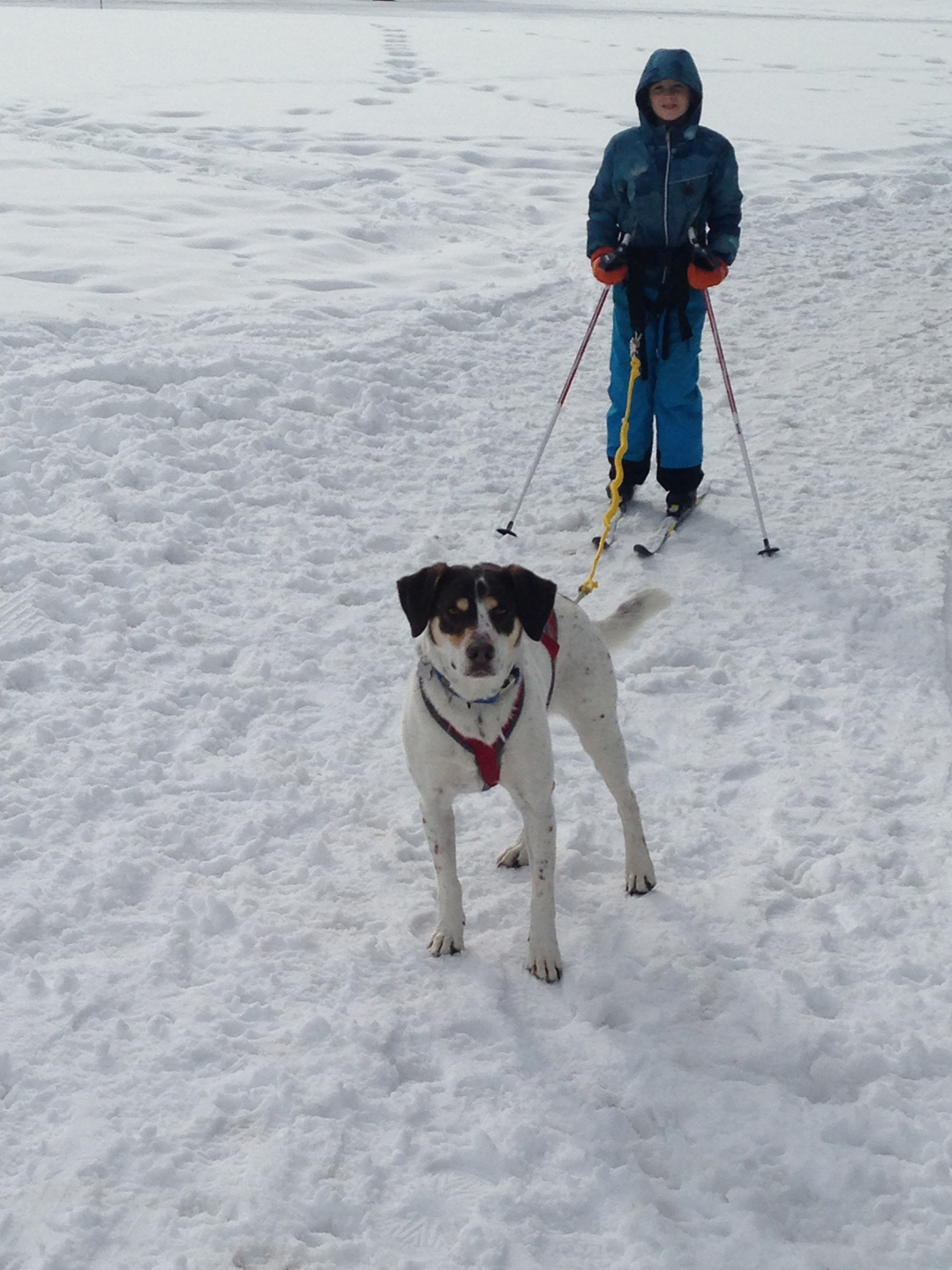 Even better, I see more skijoring with Piper in our whole family’s future. After two laps around Bernese Boulevard (four miles total), she seemed happily sated—both with exercise and with the satisfaction of having collaborated with her human pack members. As Morrissey points out, “Skijoring is a team sport. Working together is what makes it different than just going out for a ski with your dog off-leash.”
Even better, I see more skijoring with Piper in our whole family’s future. After two laps around Bernese Boulevard (four miles total), she seemed happily sated—both with exercise and with the satisfaction of having collaborated with her human pack members. As Morrissey points out, “Skijoring is a team sport. Working together is what makes it different than just going out for a ski with your dog off-leash.”
There’s an even more basic appeal at work here, too. As my husband noted during the car ride home, “Adding a dog to anything just increases the fun.”
What to Know to Get Started in Skijoring
-Any type or breed of dog can potentially skijor, though most sources recommend they weigh at least 30 pounds.
-Experienced skijorers tend to prefer skate skis for better flow and speed, but classic kick and glide skis are fine, too. The most important thing, says Morrissey, is that you are a competent cross-country skier, “both for safety, and because you’re providing quite a bit of the momentum going forward.”
-A well-fitting harness, says Morrissey, should rest on a dog’s collarbones and leave enough room around the throat for easy breathing. She prefers traditional harnesses that end at the base of the tail, which allows a dog to use his whole body to pull. As for the skier’s hip belt, while one made for skijoring is nice, even a simple climbing harness will do.
-Use dog booties when it’s really cold, or if the snow is abrasive (during spring’s freeze/thaw cycles, for example). Morrissey opts for inexpensive booties (because one or more will inevitably fall off during regular use) and ones with thinner soles. “Dogs get a lot of proprioception through their feet,” she points out, “and [sturdy rubber soles] don’t give them that feedback.”
-The book Skijor With Your Dog (second edition), by Mari Hoe-Raitto and Carol Kaynor, is an excellent resource, covering technique, training, gear, and more.
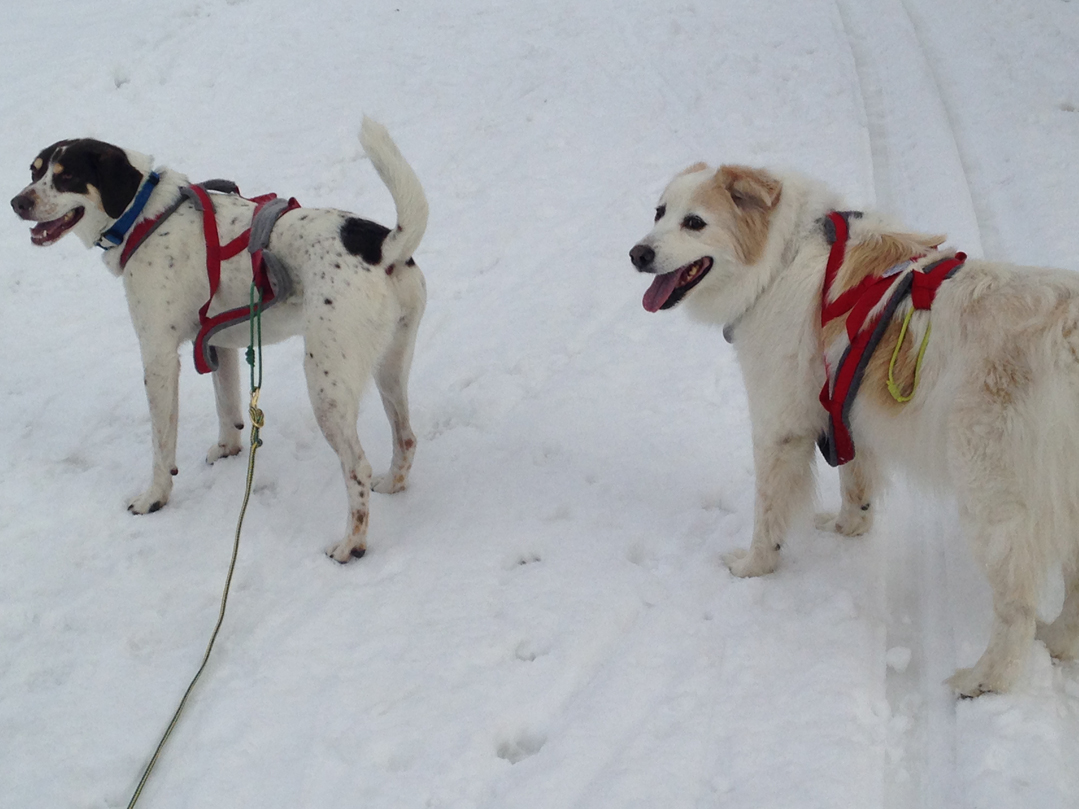
 The Magazine of The Sierra Club
The Magazine of The Sierra Club
